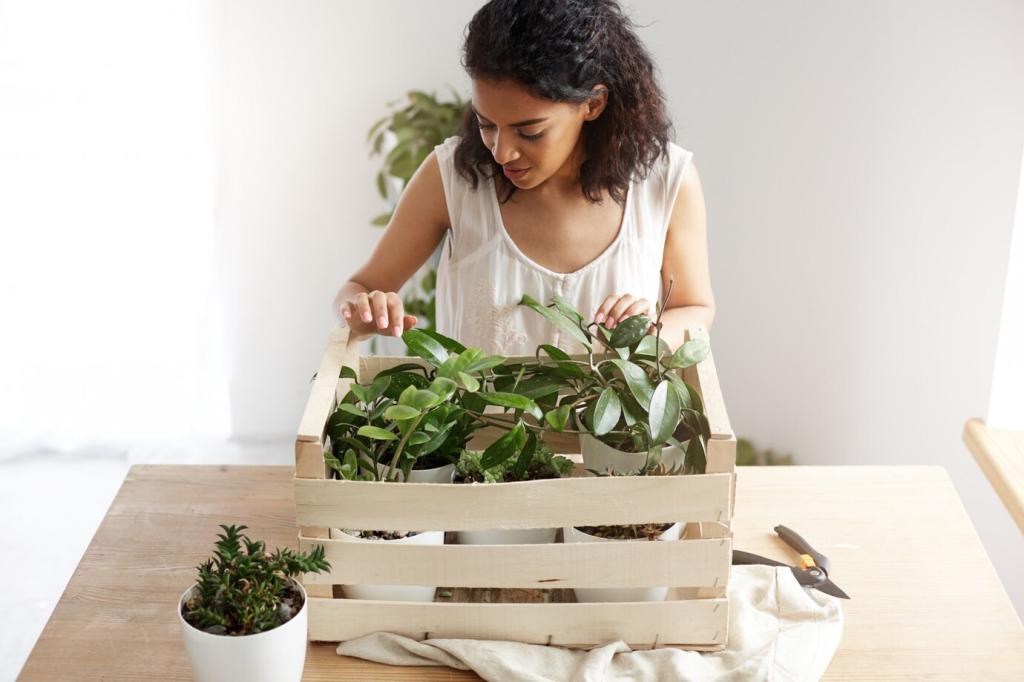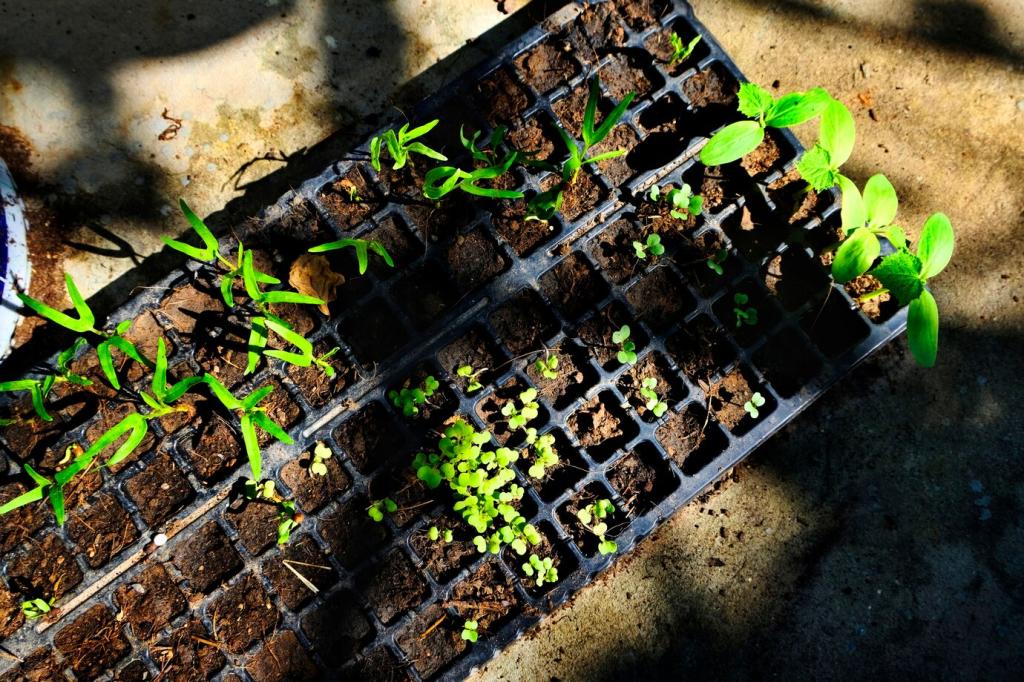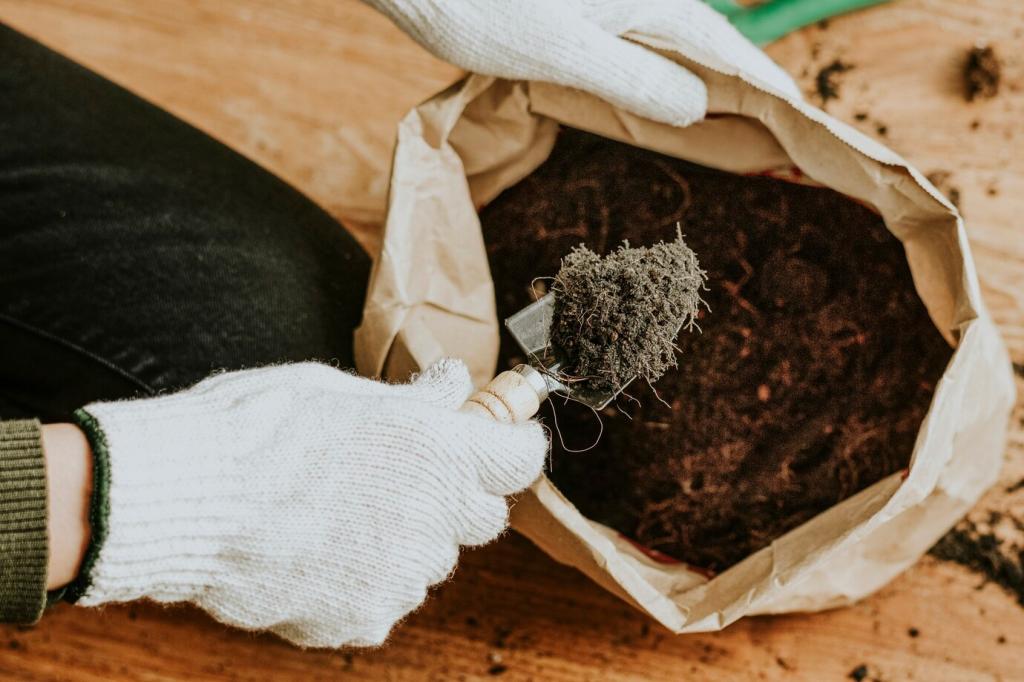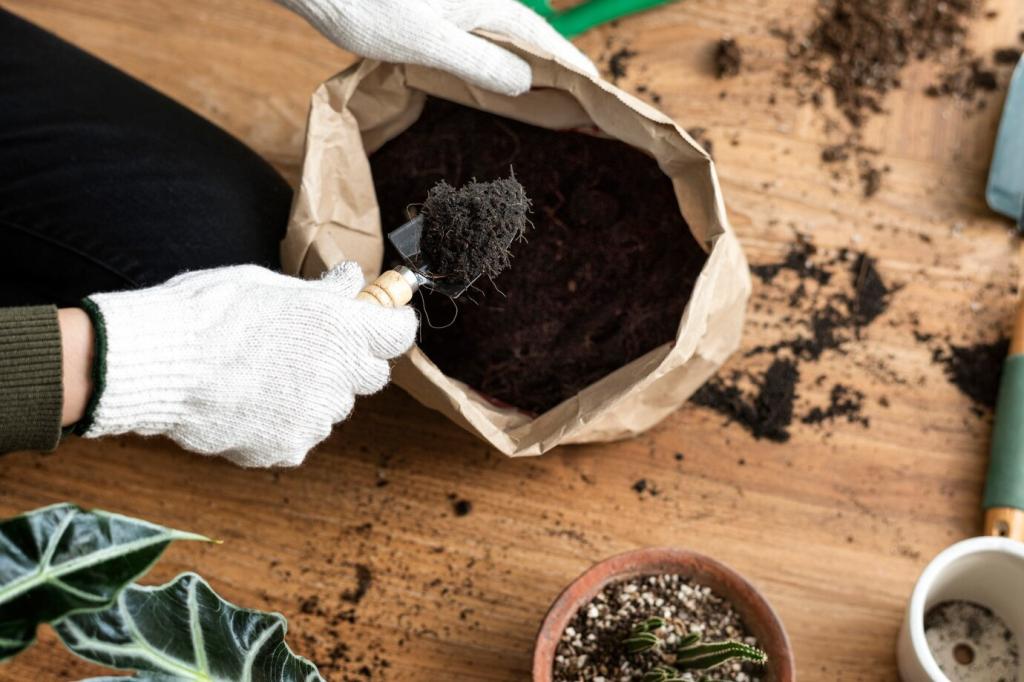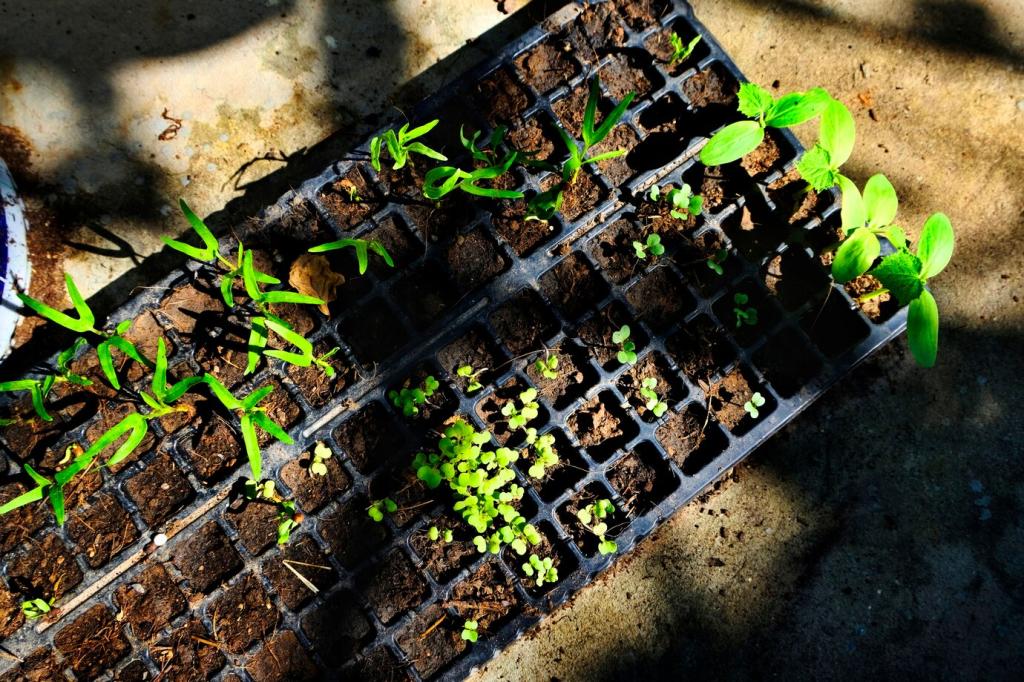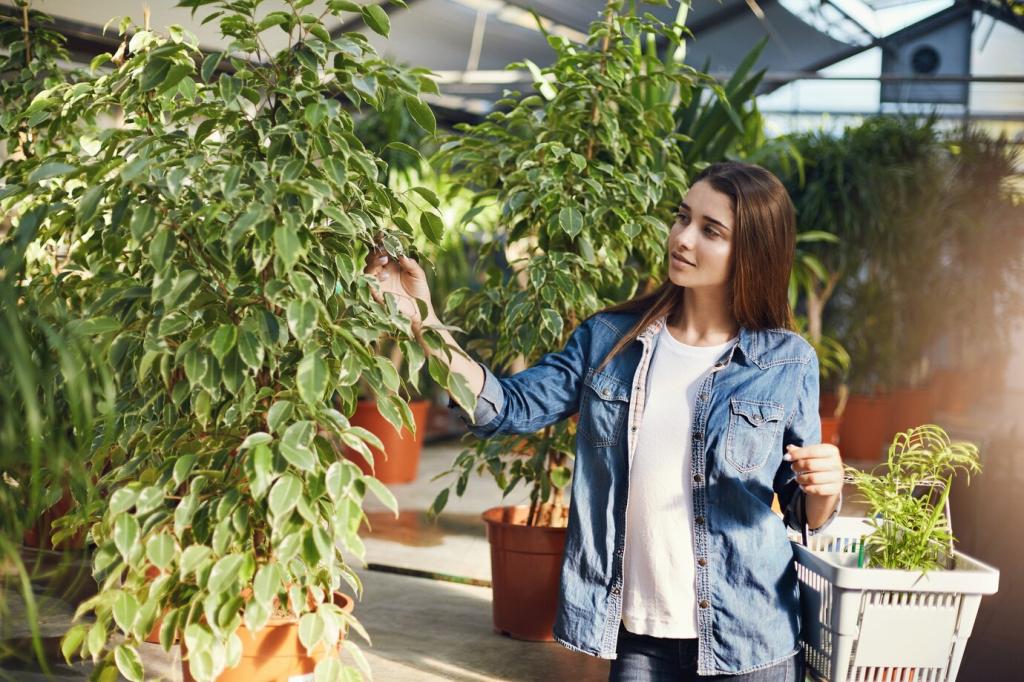Harvest and Use Your Balcony Compost
Tip a portion into a large colander or DIY mesh frame. Return chunky bits to the bin to finish. Let the sifted compost rest for two to three weeks in a breathable bag or bucket so microbes mellow and nutrients stabilize.
Harvest and Use Your Balcony Compost
Blend finished compost into potting mix at roughly twenty to thirty percent for containers. For existing plants, top-dress thinly and cover with mulch to prevent drying. Seedlings prefer a gentler mix—use less compost and keep textures light and airy.

